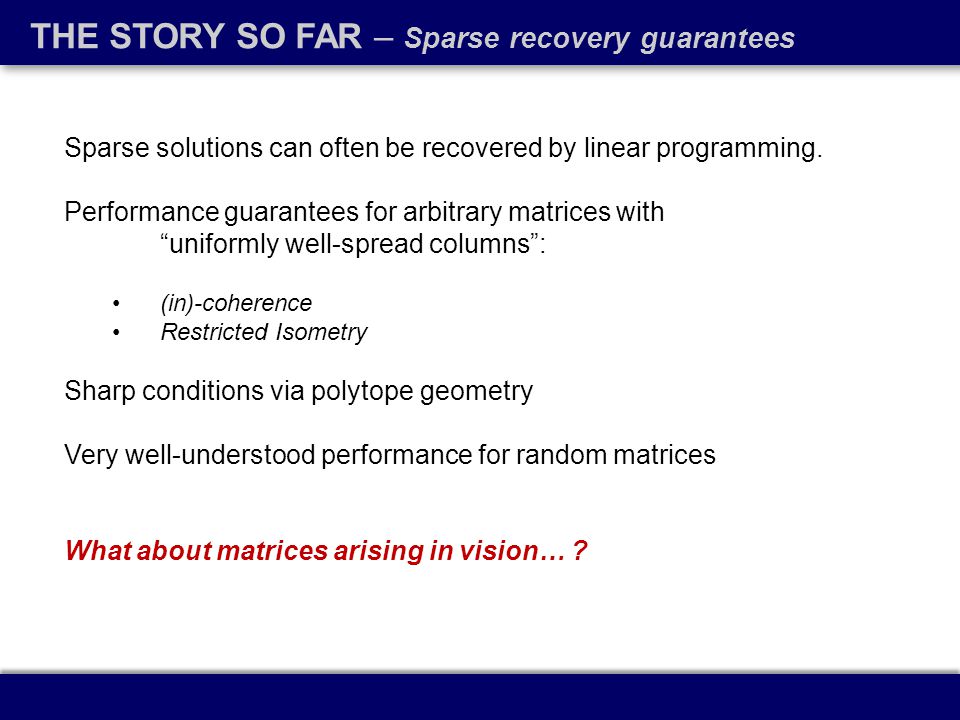Linear Program Sparse
The large matrices that arise in real-world problems in science, engineering, and mathematics tend to be mostly zero, or sparse. Termsrv.dll Windows 8.1 Patch there. Sparse matrix algorithms lie in the intersection of graph theory and numerical linear algebra. A represents the connections between variables in the mathematical model, such as the voltage across a circuit component, a link from one web page to another, the physical forces between two points in a mechanical structure, and so on, depending on the problem at hand.

The numerical linear algebra arises because these matrices represent systems of equations whose solution tells us something about how the real-world problem behaves. Google’s page rank algorithm, for example, requires the computation of an eigenvector for a matrix with as many rows and columns as there are pages on the web. My research spans the spectrum of theory, algorithms, and software development in the area of sparse matrix and graph algorithms. I’m not just interested in creating new methods and software prototypes to demonstrate those methods. I pursue the code further to produce better-than-commercial-quality software that embodies these new methods.
Nine of my codes appear as Collected Algorithms of the ACM, where they undergo rigorous peer-review testing for their research contributions and software quality. I just love to delve into the theory and algorithms of graph theoretic and applied mathematical algorithms, but I don’t stop there. I just love to code. I collaborate with others with the same passion -- and I hope to instill the same drive in my students (graduate and undergraduate). NASA once performed a software engineering exercise in which they used the most extreme techniques to produce the highest quality code they could create.
With a fault rate of 0.1 KLOC, they concluded that such reliability is achievable but not practical. The MathWorks utilizes about 120K lines of my codes in MATLAB: x=A b when A is sparse, sparse factorization methods (LU, QR, and Cholesky), sparse matrix multiplication, Dulmage-Mendelsohn decomposition, and fill-reducing orderings. If printed out, 120K lines of code would equal about 2 reams of paper, front and back.